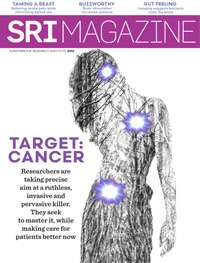Aerobic exercise as a “biological probe” in bipolar disorder


Impaired thinking, particularly in executive decision-making, is common in adolescents with bipolar disorder. It adds insult to injury, as it were, and makes social and other activities even harder to carry out, beyond the effect of mood symptoms. While anecdotal evidence suggests that exercise might help to improve mood and cognition, there is a dearth of studies that drill down into the specifics, to try to understand just what the effects of exercise are, and the biological mechanisms behind those effects.
Brain scientists at Sunnybrook Research Institute (SRI) published the first study to examine the effects of aerobic exercise on executive function with neuroimaging in teens with bipolar disorder. Drs. Benjamin Goldstein and Brad MacIntosh, scientists in the Hurvitz Brain Sciences Research Program at SRI, and Dr. Arron Metcalfe, a postdoctoral fellow at SRI and the study’s lead author, compared two groups of teenagers: 30 with bipolar disorder and 20 with no major psychiatric disorders. They evaluated them on tasks commonly used to test executive function, which is the brain’s control centre, in a way, and is compromised in bipolar disorder. It enables people to plan, organize and act on information; and to pay attention. The team looked at the teens’ brains before and after exercise, to see what effects, if any, the exercise had.
For the study, teens rode a recumbent bicycle for 27 minutes, 20 of which got their heart rates up to a defined aerobic level. The attention tests were done before and 25 minutes after exercising. Their brains were scanned using functional MRI, which allows scientists to look at brain activity and response. Results, published in the high-impact journal Translational Psychiatry, were fascinating. The team was able to see that just 20 minutes of aerobic exercise improved neural markers of attention and inhibition, and did so in specific brain areas of interest.
The implications are that exercise is not only a potential treatment in this arena, but also that its effect can be used as an objective marker—a “biological probe”—to expose differences in the brains of adolescents with bipolar disorder. Imaging can thus provide a window into the brains of these teens, to see just what is going on. This in turn could help scientists develop treatments that don’t—as is the case now—rely on subjective reporting of symptoms, but instead could target specific brain systems.



